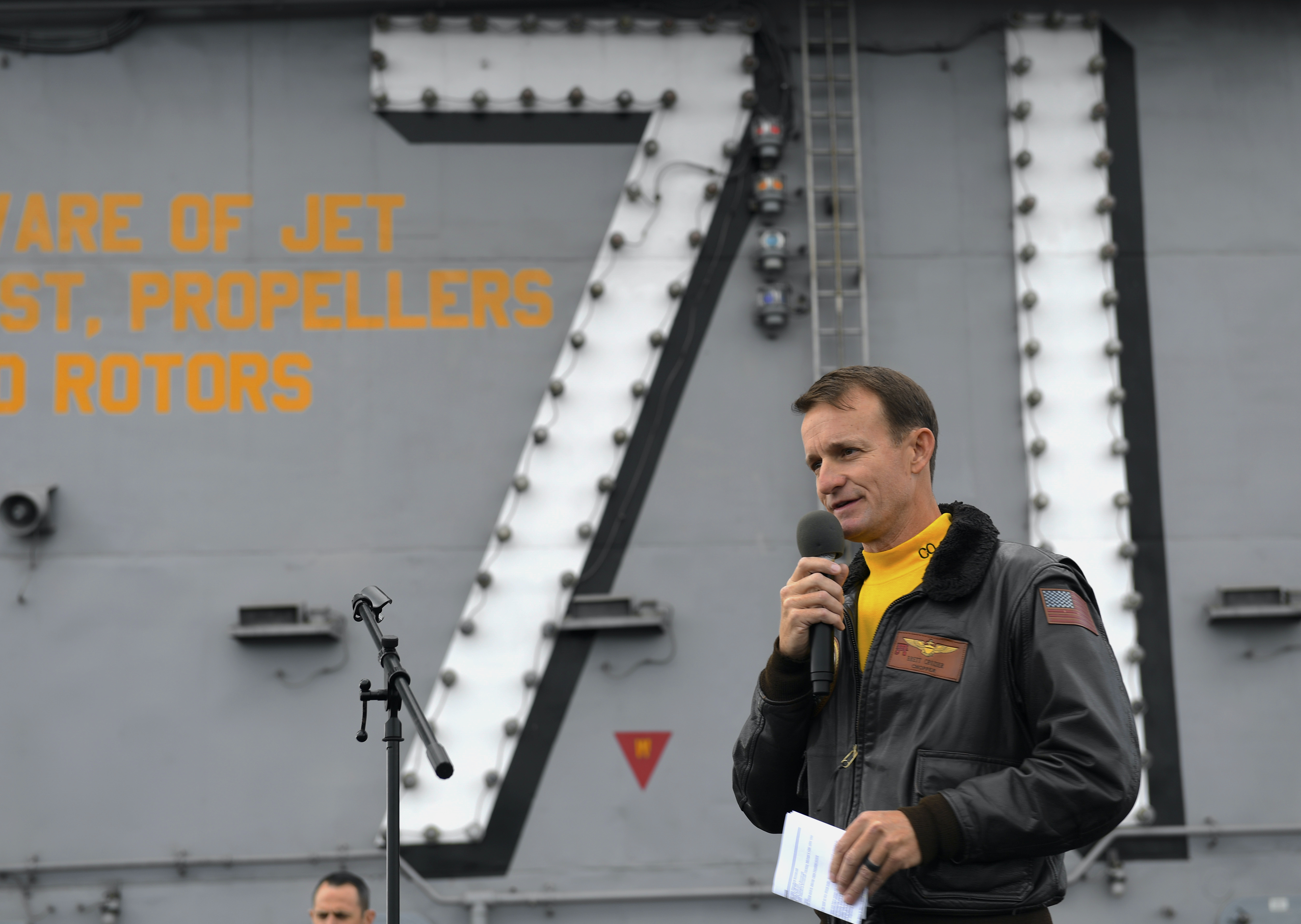
The carrier commander who warned that his crew didn’t have enough resources to fight an accelerating COVID-19 infection aboard his ship, has been relieved of command, Acting Secretary of the Navy Thomas Modly told reporters on Thursday afternoon.
USS Theodore Roosevelt (CVN-71) commander Capt. Brett Crozier showed “extremely poor judgment” in how he sent a message asking his chain of command for more resources to treat and isolate the sailors who had contracted the virus over the last month and continued to spread it amongst the carrier’s crew.
Crozier wrote a four-page letter and sent it over an unclassified network to not only his chain of command but also 20 to 30 other people in the service, Modly said.
In the letter, which was leaked to The San Francisco Chronicle, Crozier warned that if adequate steps weren’t taken to isolate and treat the crew of 4,800 sailors, the outbreak would spread and some sailors would fall to the virus.
Modly told reporters he didn’t know if Crozier leaked the letter to the paper, but the manner in which he handled the information called into question his ability to lead the carrier.
“I’m not trying to suggest he leaked information… What I will say is that he sent it out pretty broadly, and he didn’t take care that it couldn’t be leaked.”
The way he sent the letter “demonstrated extremely poor judgment in the middle of a crisis,” Modly said. “Because what it’s done is, it’s created a firestorm. It’s created doubts about the ship’s ability to go to sea if it needs to. It’s created doubt among the families about the health of their sailors, and that was a completely unnecessary thing to do in the midst of the crisis.”
Modly went on to say that the letter had caused “panic” on the ship with senior enlisted leaders unable to answer questions from sailors who saw the letter after it was leaked.
Several sources told USNI News ahead of the announcement that Navy leaders in the Pacific did not recommend Crozier’s removal from command.
Executive Officer Capt. Dan Keeler will command the carrier temporarily until the arrival of former Theodore Roosevelt commander Rear Adm. Carlos Sardiello in Guam, Modly said. Sardiello commanded the carrier from July 2017 until November 2019, when he turned over command to Crozier.
“Sardiello is the former commanding officer of the Theodore Roosevelt, so he is extremely well-acquainted with the ship, many members of its crew and the operations and capabilities of the ship itself,” Modly said. “He is the best person in the Navy right now to take command under these circumstances.”
Modly also said Vice Chief of Naval Operations Adm. Robert Burke would lead “an investigation into the circumstances and climate of the entire Pacific Fleet to help determine what may have contributed to this breakdown in the chain of command.”
Modly said the information that Crozier had allowed to become public also called into question the ability of the service to assist in clearing the carrier of the virus. Modly said Crozier had been in communication with SECNAV’s chief of staff and other leaders in the fleet that were attuned to the concerns for the speed of keeping the sailors safe.
“At no time did the CO relay the various levels of alarm that I, along with the rest of the world, learned from his letter when it was published two days later,” Modly said.
“The captain’s actions made his sailors, their families, and many in the public believe that his letter was the only reason help from our larger Navy family was forthcoming, which was hardly the case.”
The day before the announcement, Modly told reporters in a briefing that 2,700 sailors would be cycled off the carrier to either the naval base or hotels in Guam by the end of the week.
In discussing relieving Crozier of command, Modly also said that the release of the letter and details about the state of readiness on the carrier had a broader national security affect.
“While we may not be at war in a traditional sense, neither are we truly at peace. … Perhaps more so than in the recent past, we require commanders with the judgment, maturity, and leadership composure under pressure to understand the ramifications of their actions within that larger dynamic strategic context,” Modly said.
“We all understand and cherish our responsibilities, and frankly our love for all of our people in uniform, but to allow those emotions to color our judgment when communicating the current operational picture can, at best, create unnecessary confusion, and at worst provide an incomplete picture of American combat readiness to our adversaries.”





